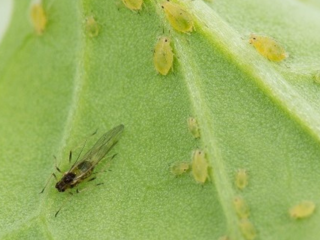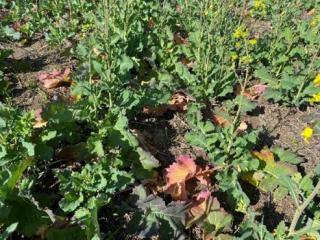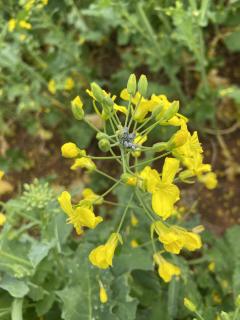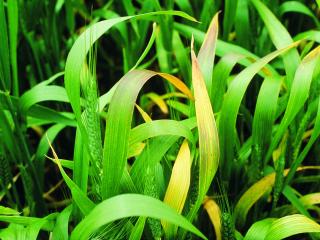Turnip yellows virus detected in flying green peach aphids and in canola
- Kwinana West port zone
- Albany port zone
- Esperance port zone
The Department of Primary Industries and Regional Development (DPIRD) is still monitoring green peach aphid (GPA) activity at sites in the Kwinana West, Albany and Esperance port zones.
The increased daytime temperatures experienced in the recent two weeks are likely responsible for a noticeable surge in aphid activity in the Kwinana West zone. There has been an increase both in numbers of winged aphids caught on traps, and frequency of within-crop colonization. For the first time this season Turnip yellows virus (TuYV) has been detected in flying green peach aphid (GPA) at Toodyay and in a nearby canola crop at Nunile.
GPA are now colonizing most canola crops in the Kwinana West and Albany port zones. As is common with this pest, despite low numbers of individuals being present on any given plant, colonization can occur on a large proportion of plants in many infested crops. Recent crop inspections revealed GPA were infesting 50-75% of plants around Toodyay and Northam, and 10-30% of plants in the Albany port zone. This behavior is conducive to the spread of TuYV if this virus is present.
PIRD staff will be doing further testing of leaf samples over the coming weeks.
Canola crops that are flowering and are yet to be infected are safe from TuYV-induced yield losses. However, later sown crops that are still in their vegetative stage are at risk, and should be monitored or GPA and virus-like symptoms until they reach flowering. These symptoms include leaves purpling, reddening or yellowing and plant stunting. It must be noted that TuYV can still cause yield loss without producing obvious symptoms. If TuYV is suspected in your canola crops, please contact DPIRD Plant Virologist Ben Congdon on +61 (0)8 9368 34 99 to organize free virus testing.
Cabbage aphid has also been detected on traps over the past months, and is now being reported colonizing racemes of flowering canola crops near Northam.
Oat aphids are active and were being found in the Albany port zone as early as May. David Stead (Anasazi Agronomy) recently reported finding oats aphids in cereal crops around Brookton. Agronomists and growers who notice cereal aphids in their crops should also be on the look out for barley yellow dwarf virus (BYDV) symptoms. For more information, refer to DPIRD’s Managing barley yellow dwarf virus and cereal yellow dwarf virus in cereals page.
As day length and daytime temperatures increase over the coming months, it is expected that aphids will continue to build up in crops across the WA grainbelt.
For canola and cereal aphid insecticide recommendations, refer to DPIRD’s 2023 winter spring insecticide guide.
To read about earlier aphid and TuYV activity this season, refer to the previous 2023 PestFacts WA articles:
- Issue 7 Green peach aphid and turnip yellows virus update
- Issue 6 Green peach aphid alert
- Issue 5 Early season aphid and virus risk in cereals and canola.
For more aphid and virus information, refer to DPIRD’s:
- Aphid management in canola crops page.
- Turnip yellows virus early warning system page
- Turnip yellows virus in canola: diagnosis and management page.
For further information contact Research Scientist Benjamin Congdon from South Perth on +61 (0)8 9368 3499.
Article authors: Benjamin Congdon (DPIRD South Perth) and Cindy Webster (DPIRD Narrogin).




